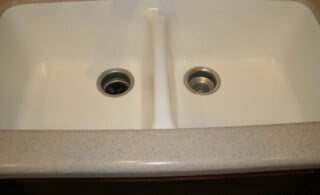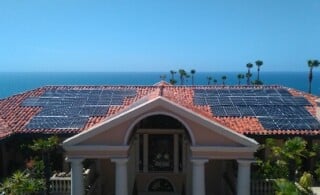
With skyrocketing energy costs and environmental concerns lurking around every corner, homeowners across the country are looking more and more to how they can conserve energy in their home. Enter the U.S. Department of Energy’s Energy Star label, which applies to everything from refrigerators and air conditioners, to televisions and dishwashers. While the idea behind the Energy Star label is to make it easier for homeowners to shop for energy efficient appliances, the question has to be asked whether the appliances that qualify are really worth the higher initial costs. This Pros, Cons, & Costs aims to find out.
Energy Star Appliances: the Pros
It seems that most of the hype around the Energy Star label is well deserved. Energy Star rated appliances saved homeowners over 14 billion dollars in 2006 alone, and reduced national fossil fuel emissions during that year by the equivalent of 25 million cars. As those numbers are bound to increase as technology advances, it’s clear that Energy Star appliances are a plus for the environment and your pocketbook at the same time. Here’s the Pros of installing Energy Star appliances in your home.
- Reduced Energy Costs — According to the U.S. Department of Energy, Energy Star appliances can reduce your home appliance energy usage, and costs, by as much as 10 percent to 50 percent. While specific savings vary home to home, the National Resource Defense Council (NRDC) estimates that energy efficiency standards have already saved American homeowners in the neighborhood of $200 billion to date, or about $2,000 per household.
- Environmentally Friendly — Energy Star appliances aren’t just good for your pocketbook. According to sources as varied as the Washington Post, the NRDC, and the U.S. Government, they reduce greenhouse gas emissions, water consumption, and our reliance on dwindling fossil fuel resources and foreign oil.
- More Convenience — Energy Star appliances are also more convenient. For example, according to information provided by the NRDC and the Washington Post, purchasing Energy Star washer and dryer means that you can wash more clothes in a single load, and dry them faster. In other words, you’ll do less loads of laundry, and in less time, if you shop with Energy Star labels in mind.
Energy Star Appliances: the Cons
The goal of Pros, Cons, & Costs is to provide homeowners with the information they need on a given subject, pointing out both it’s strengths and it’s weaknesses. When it comes to Energy Star appliances, we’re having a tough time finding any reasons why you wouldn’t want to choose this option. Sure these appliances are going to cost you a little bit more up front, but when it really comes down to it, the long term energy saving benefits of Energy Star appliances far outweigh the only negative we can find: higher initial costs.
Energy Star Appliances: the Costs
That said, just what are Energy Star appliances going to cost the average homeowner? It’s really a matter of perspective. There’s no question that you’ll pay more up front by choosing an Energy Star rated appliance, but when you look at long term energy savings, it becomes clear that your higher initial investment will end up paying for itself as the years roll by. Just in case you’re still curious what you have to gain, here’s a few numbers from the National Resource Defense Council (NRDC) to help seal the deal. According to the NRDC, replacing a 1980’s model refrigerator with a new, Energy Star rated model can save you $100 a year in total energy costs, replacing a pre-1994 clothes washer with an Energy Star washer will save you as much as $110 a year, and a new, Energy Star dishwasher will save you about $25 per year on your utility bills. Multiply those savings by the 10 to 20 year lifespan of most appliances, and it’s clear to us here at Pros, Cons, & Costs that upgrading to an Energy Star appliance is worth every penny, and then some.
 Garbage Disposal Cleaning: Show Your Garbage Disposal Who Is Boss
Garbage Disposal Cleaning: Show Your Garbage Disposal Who Is Boss  Making Your Home Energy Efficient
Making Your Home Energy Efficient  Fiberglass Insulation: A Simple Energy Saver
Fiberglass Insulation: A Simple Energy Saver  How to Fix a Leaking Fridge
How to Fix a Leaking Fridge  Building an Energy Efficient Home
Building an Energy Efficient Home 

Well, I’m sure this will never get posted, but you left out some of the biggest con’s related to Energy Star appliances. First is that the motors and compressors and other parts are built smaller and run more continuously (especially in HVAC units and refrigerators) and hotter, thus reducing the lifespan of these major components, When I told the salesman, my last refrigerator lasted 22 years, he just laughed and said you’ll be lucky to get 10 out of this one, he was right 7 was it, compressor went out, cost about $900 to fix, not worth the repair. You also left out the fact that many of these energy efficient dishwashers take 3-4 hours to complete a cycle included the drying, all to save a little bit of water and a little bit of electricity. I got a new energy star heat pump, doesn’t work nearly as good as my old one and has been down 5 times in 5 years (various reasons) components not lasted long. So go ahead and fool yourself about this stuff, it’s not built very well, takes longer to complete and doesn’t last long, I’m buying older stuff that was built with quality in mind, not saving energy!
I have energy star appliances and have to question whether they really save energy. 3 hours to wash and dry each load of laundry It takes all day to get through bedding. That means my washer and dryer are continuously running from 7 am to 9pm really. God forbid you put a drop of more HE laundry detergent in, well hope you enjoy hand ringing out whatever you had in the washer because the spin cycle is useless. Don’t hand ring well enough well the hour and half for the dryer now became 4 hours